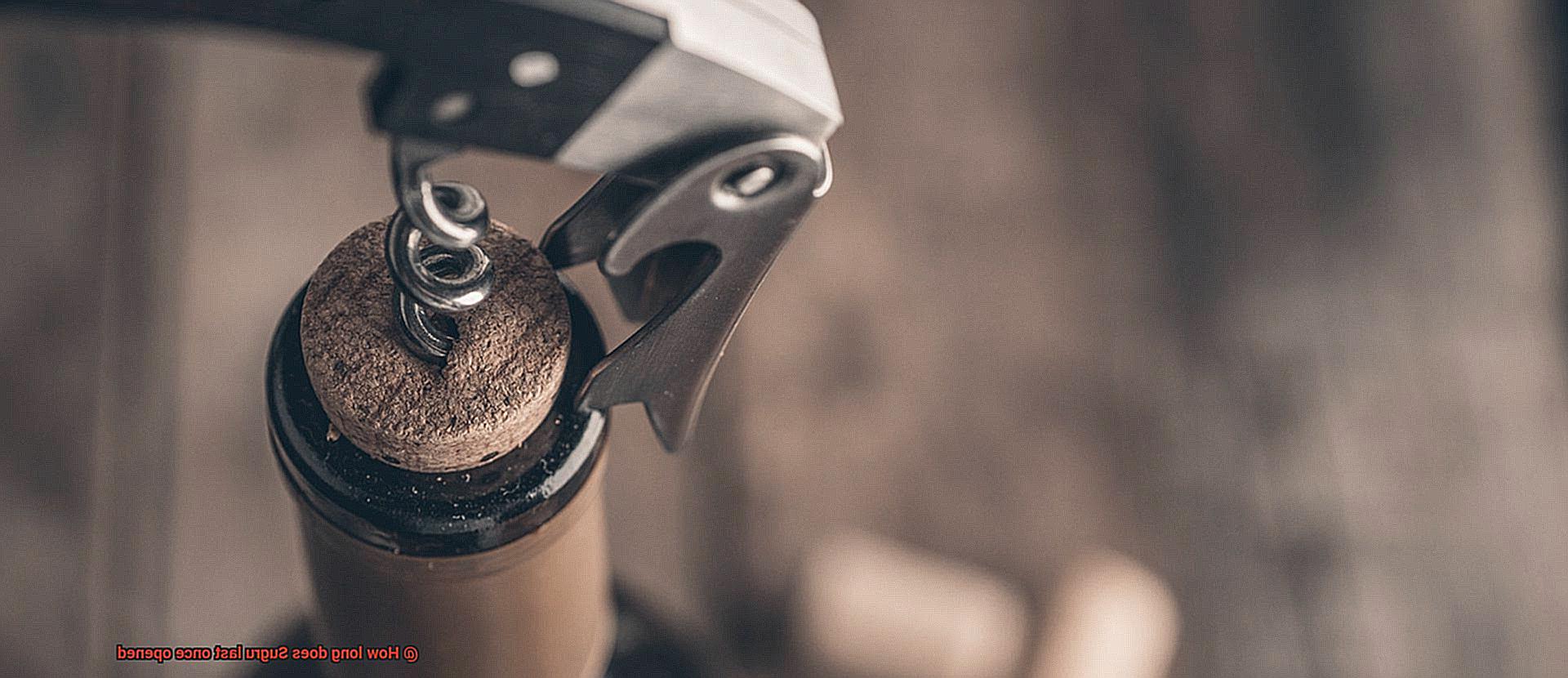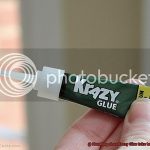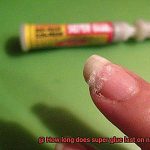Hey there DIY enthusiasts and crafty individuals.
Contents
Ever stumbled upon a product that seems too good to be true? Well, let me introduce you to Sugru – the moldable glue that’s like a superhero for fixing, improving, and creating just about anything your heart desires.
But here’s the million-dollar question: how long does this magical substance last once you crack open its packaging? Today, we’re diving deep into the world of Sugru to uncover the secrets behind its longevity.
Whether you’re a Sugru pro or a newbie who’s never even heard of it before, this blog post is your ultimate guide. We’ll explore all the factors that can influence its shelf life, dish out some handy tips to prolong its usability, and debunk any rumors that might be floating around.
So grab your trusty crafting tools and get ready to embark on an exciting journey into the captivating realm of Sugru.
What Is Sugru?
Look no further than Sugru, the revolutionary moldable glue that can fix, modify, and create almost anything you can imagine. Developed by Jane ní Dhulchaointigh, this versatile material has taken the DIY world by storm since its introduction in 200In this article, we will delve into the features and numerous applications of Sugru, as well as its impressive durability and shelf life once opened.
Versatility and Features:

Sugru is not your average adhesive. It is a self-setting silicone rubber that starts off as a malleable putty-like substance, making it incredibly easy to work with. Its vibrant colors add a touch of creativity to any project, allowing you to express your personality. But what truly sets Sugru apart is its unparalleled adhesive properties. It bonds permanently to ceramics, glass, metal, wood, and most plastics, making it suitable for a wide range of materials. Whether it’s indoor or outdoor use, Sugru has got you covered.
Application:
The possibilities with Sugru are endless. Repairing broken ceramics or torn cables? Check. Creating custom grips on tools? Check. Adding padding for comfortable handles? Check. Sugru does it all. Its moldable nature allows you to shape and sculpt it into any form or fill gaps and cracks seamlessly. Say goodbye to unsightly repairs or uncomfortable tools – Sugru provides a solution for every problem.
Durability and Shelf Life:
Once cured within 24 hours, Sugru forms a bond that can withstand water, heat, cold, and UV rays. It remains strong and durable under various conditions, ensuring that your repairs or modifications last. But what about its shelf life once opened? The answer lies in proper storage. Keep your opened Sugru in an airtight container or resealable bag for up to six months without worrying about wastage. This longevity allows you to save any unused material for future projects, maximizing its value and reducing waste.
How Long Does Sugru Last Once Opened?
You’ve probably heard of Sugru, the incredible moldable glue that can fix just about anything. But how long does this magical substance last once it’s been opened?
Fear not, my fellow DIY enthusiasts, for I have done the research for you. In its unopened state, Sugru has an impressive shelf life. Most packages have an expiration date that is several years from the date of manufacture. That means you can stock up on this magical glue and have it ready for all your projects whenever inspiration strikes.
But what happens once you crack open that packet of Sugru goodness? The clock starts ticking. You see, exposure to air triggers a chemical reaction within Sugru that eventually leads to its hardening and curing process. So, it’s important to store it properly to maximize its lifespan.
To keep Sugru usable for as long as possible, make sure to store it in an airtight container or seal the packet tightly after each use. This prevents excessive air exposure and slows down the hardening process. And if you really want to go the extra mile, keep it in a cool and dry place. Heat and moisture can accelerate the hardening process and reduce its shelf life.
Now, here’s the thing – even if your Sugru starts to harden after opening, it doesn’t necessarily become completely unusable. Depending on your project or application, partially hardened Sugru may still have some adhesive properties or be suitable for certain uses. However, for optimal results, it’s recommended to use Sugru within a few months after opening. That way, you can ensure that it’s still pliable enough to mold and adhere effectively.
Factors Affecting the Shelf Life of Sugru
Are you tired of finding your Sugru all dried up and unusable just when you need it most? Fear not, my fellow DIY enthusiasts. In this blog post, we will explore the factors that affect the shelf life of Sugru and share tips on how to extend its usability. So grab your glue guns and let’s dive into the world of Sugru.
Factor 1: Exposure to Air:
Like a superhero exposed to kryptonite, Sugru is vulnerable to its arch-nemesis – air. Once opened, the material starts to come in contact with air, leading to drying out and hardening. But worry not. Simply seal the packaging tightly after each use, minimizing air exposure and keeping Sugru fresh for longer.
Factor 2: Temperature:
Temperature plays a pivotal role in determining Sugru’s longevity. Extreme heat can accelerate the drying process, while cold temperatures can affect its consistency. To keep your Sugru in tip-top shape, store it in a cool, dry place away from direct sunlight and temperature fluctuations. Think of it as giving your glue a cozy home.
Factor 3: Humidity:
High humidity levels can turn your Sugru into a sticky mess and compromise its effectiveness. To protect it from excessive moisture, store it in an airtight container or resealable bag. This way, you’ll keep the stickiness at bay and maintain Sugru’s magical properties.
Factor 4: Contamination:
Nobody likes a contaminated glue. To prevent foreign substances from infiltrating your Sugru, ensure that your hands and surfaces are clean before use. Also, be sure to store any leftover Sugru properly, as contamination can occur when it comes into contact with debris or other materials.
Factor 5: Usage Frequency:
The more you use Sugru, the shorter its overall lifespan becomes. Each time it’s exposed to air and manipulated, it undergoes some degree of drying and hardening. If you don’t plan on using Sugru frequently, consider purchasing smaller quantities to minimize waste and keep it fresh for longer.
Tips for Maximizing the Lifespan of Sugru
You’ve probably heard about Sugru: the incredible moldable glue that can turn any idea into reality. But did you know that there are tips and tricks to maximize its lifespan? In this article, we’ll share some invaluable advice to help you keep your Sugru fresh and ready for all your crafting adventures.
Store it Like a Pro:
Just like your favorite snacks need a cool and dry place to stay fresh, Sugru also needs a cozy spot. Find a cool and dry place to store your Sugru, away from high temperatures and humidity. A drawer or cupboard is perfect for this purpose. By providing optimal storage conditions, you can ensure that your Sugru stays in prime condition, ready for action whenever inspiration strikes.
Seal the Deal:
Once you open a packet of Sugru, make sure to keep it sealed when you’re not using it. Just like superheroes need their secret hideouts, Sugru needs to be protected from air. Air exposure can cause it to dry out and become less sticky. Use an airtight container or resealable bag to keep it safe and sound. By sealing the deal, you’ll keep your Sugru fresh and ready for all your crafting adventures.
Use Small Portions:
Remember, Sugru comes in small packets for a reason, so you can use just what you need. Avoid wasting precious Sugru by using smaller portions. Cut off only what you need for each project and save the rest for later. It’s like having a delicious cake slice instead of the whole cake. By using small portions, you’ll maximize the lifespan of your Sugru and ensure that none of it goes to waste.
Handle with Care:
Sugru is a robust glue, but it doesn’t enjoy being handled too much. Treat it gently, like a fragile treasure. Only touch it when necessary and avoid excessive kneading or molding. Overhandling can cause Sugru to dry out too quickly, reducing its lifespan. By handling it with care, you’ll maintain its magic powers and ensure that it remains pliable and ready for all your crafty endeavors.
Clean Your Tools:
If you use tools like scissors or knives to cut or shape your Sugru, give them a good clean after each use. Any leftover Sugru on your tools can harden and make them less effective for future projects. Keep your tools shiny and ready for action by cleaning them after every use. By doing so, you’ll maintain the quality of your tools and ensure that they’re always at their best when working with Sugru.
Testing the Usability of Opened Sugru
Prepare to dive into the captivating world of opened Sugru and discover how to test its usability. Sugru, the versatile adhesive that transforms wild ideas into reality, holds endless possibilities. But what happens once you crack open that vibrant pack? Let’s find out.
Texture and Consistency:
First on our list is examining the texture and consistency of opened Sugru. Gently squeeze a small amount between your fingers and assess if it remains pliable and moldable. Is it as smooth as silk or dry, crumbly, and hard? The feel will reveal if the product has degraded, rendering it unusable.
Adhesion Properties:
Next up, let’s test the adhesive strength of opened Sugru. Apply a touch onto different surfaces like wood, metal, or plastic, and observe how well it sticks. Does it cling like a tenacious friend or falters under pressure? The bond’s durability will impact your projects’ practicality and longevity.
Flexibility:
Flexibility is paramount for Sugru’s usability. Bend, stretch, or compress the opened Sugru to see if it adapts without losing its adhesive properties. Does it gracefully adapt to any shape or turns brittle, ready to crack under strain? A pliable substance guarantees reliability in demanding applications.
Curing Time:
Curing time determines how long it takes for Sugru to harden and form a permanent bond. Apply a small sample on a test surface and watch its transformation closely. Does it swiftly solidify or sluggishly linger in a half-cured state? An unusually long curing process or incomplete curing may indicate expiration or reduced effectiveness.
Control Sample:
For accurate results, always have a control sample of unopened Sugru for comparison purposes. This acts as a benchmark to identify any changes in texture, adhesion, flexibility, or curing time that occur over time. By comparing the usability of opened Sugru to the control sample, you can make an informed judgment on its longevity.
Conclusion:
Crafters, it’s vital to put your opened Sugru to the test to ensure it’s still in its prime. Evaluate its texture, adhesion, flexibility, and curing time to guarantee your projects remain as sticky and creative as ever. Share your findings with fellow Sugru enthusiasts and let’s keep the glue game strong.
How to Properly Store and Handle Sugru
Sugru is a remarkable adhesive that can help you fix, create, and customize a wide range of objects. To ensure that you get the most out of this versatile glue, it is crucial to know how to properly store and handle it. In this guide, we will explore the best practices for maximizing the shelf life and performance of Sugru.
Storing Sugru:
To maintain Sugru’s optimal condition, it should be stored in a cool and dry place. High temperatures can soften or even melt the material, so it is essential to keep it away from direct sunlight or heat sources like radiators or ovens.
Packaging and Airtight Containers:
To prevent Sugru from drying out, store it in its original packaging or transfer it to an airtight container. This helps preserve its moisture and adhesive properties. Remember that once opened, Sugru has a shelf life of approximately 13 months, so sealing it tightly is crucial.
Handling Sugru:
Before opening a pack of Sugru, knead and roll the package between your fingers to ensure thorough mixing of the material inside. This guarantees optimal results when using Sugru for your projects.
Clean Hands and Gloves:
When handling Sugru, make sure your hands are clean and free from any oils or dirt that could contaminate the material. If you have sensitive skin or are working with large amounts of Sugru for an extended period, wearing gloves is recommended.
Proper Sealing:
After completing your project, promptly seal any leftover Sugru. This prevents air exposure, which can cause the material to dry out. For best results, use plastic wrap or resealable bags and remove as much air as possible before sealing.
Monitoring Freshness:
Over time, opened Sugru may become less pliable due to exposure to air. While it may still be usable for some applications, it might not have the same adhesive properties or moldability as fresh Sugru. If you notice changes in color, texture, or smell, it’s best to discard it and use a fresh pack.
Is It Worth Using Expired Sugru?
We’ve all been there – reaching for our trusty Sugru only to find that it expired months ago. The temptation to give it a try anyway may cross your mind, but let me tell you why using expired Sugru is not recommended.
First and foremost, the adhesive properties of Sugru can weaken over time. Just like any other material, Sugru can deteriorate, losing its effectiveness in sticking to surfaces. So if you’re hoping to fix that broken mug or secure a loose cable, using expired Sugru may not yield the desired results.
Not only can the adhesive properties weaken, but the texture and consistency of expired Sugru can also change. It may become harder or more brittle, making it difficult to mold and shape as intended. Imagine trying to sculpt something with a block of concrete instead of moldable clay – not exactly ideal.
In addition to these practical issues, expired Sugru may also not cure properly. Curing is the process by which Sugru hardens and sets into its final form. If the product is expired, it may not fully cure, leaving it in a semi-soft or tacky state. This can be frustrating when you’re expecting a solid and durable fix.
Furthermore, using expired Sugru can pose safety risks. While unlikely, there is a possibility that the chemical composition of the product may change over time, potentially leading to adverse reactions or allergic responses. It’s always better to be safe than sorry when it comes to your health and well-being.
In conclusion, it is generally recommended to avoid using expired Sugru. The weakening adhesive properties, changes in texture and consistency, potential lack of proper curing, and safety risks make it not worth the gamble. Instead, invest in fresh Sugru for your adhesive needs and dispose of any expired product properly according to local waste management guidelines. Your projects and peace of mind will thank you.
In summary, using expired Sugru can lead to:
- Weakening adhesive properties
- Changes in texture and consistency
- Improper curing
- Potential safety risks
0RQ1nYKsGPs” >
Conclusion
In conclusion, Sugru is an extraordinary adhesive that boasts impressive durability and a lengthy shelf life once opened. When stored correctly in an airtight container or resealable bag, it can remain usable for up to six months without drying out or becoming stiff. However, it’s crucial to bear in mind that exposure to air triggers a chemical reaction within Sugru, ultimately leading to its hardening and curing process. To extend its lifespan as much as possible, it should be kept in a cool and dry location, far away from heat, moisture, and fluctuations in temperature.
While partially hardened Sugru may still possess some adhesive properties or be suitable for specific applications, it is advisable to utilize Sugru within a few months of opening for optimal outcomes. As time goes on, opened Sugru may gradually lose its pliability due to exposure to air; therefore, vigilantly monitoring its freshness becomes paramount.
Using expired Sugru is not recommended since its adhesive properties weaken, texture and consistency alter, proper curing may not occur, and safety risks could emerge. It is always wise to invest in fresh Sugru for your adhesive needs and responsibly dispose of any expired product.
So whether you’re repairing shattered ceramics or fashioning custom grips on your tools, take care to store and handle your Sugru with precision to ensure its longevity and effectiveness.






